Classic 1957 MF 35 tractor working in Tanzania
Posted by Chris Graham on 2nd July 2022
Charity founder Rob Barbour, explains the valuable difference that a classic 1957 MF 35 tractor is making to village life in rural Tanzania.
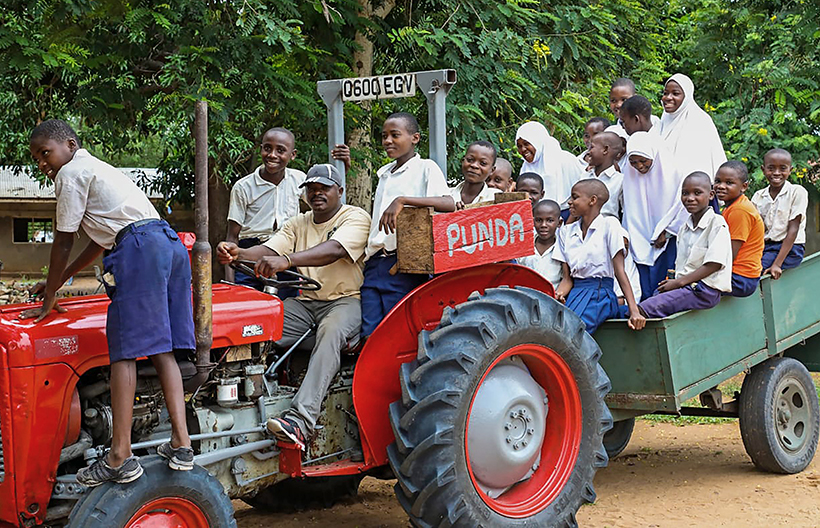
This 1957 MF 35 is spending its retirement in Tanzania, working on a a community wildlife and habitat conservation and community development project.
Where are you working and why the need for a tractor?
We are working at Kisampa Conservancy, which is a community wildlife and habitat conservation and community development project that I founded in Matipwili village, in coastal Tanzania, East Africa. The 60km2 private conservancy shares a border with the Saadani National Park, and most of the work in our village is done the traditional way, by hand – as it always has been. So it was clear to me that the introduction of a tractor would make a significant difference, both for helping with our general conservation tasks, and for use by the local farmers. However, the problem was that we simply didn’t have the budget to acquire one.
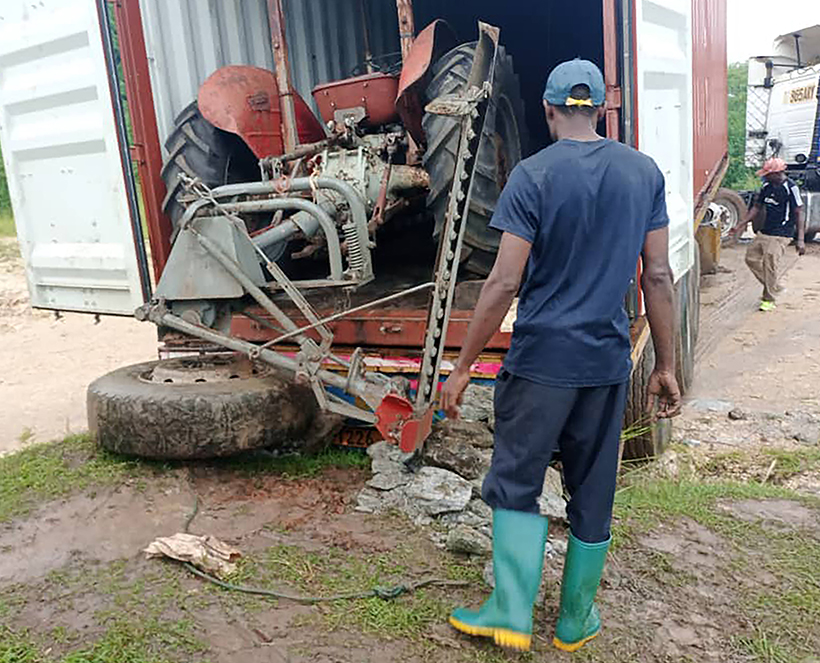
The tractor arrived in Tanzania in a 20-foot container at the end of a Covid-delayed, six-month journey from the UK. To complicate matters, the lorry transporting the container from the port got stuck in mud 40km from the final destination, so everything had to be unloaded so that the tractor could be driven the last part of the journey under its own power.
Where did the tractor come from?
Clearly, there was little point in us sourcing a modern machine and the maintenance support required to look after such a complex machine simply doesn’t exist in this part of rural Tanzania. But a classic tractor, with its inherently straightforward and robust mechanicals, would offer a workable solution and, fortunately, I had a connection with The Ferguson Club. in the UK. I was introduced to the club’s publicity officer, John Selley, by a mutual friend, and he was more than happy to help.
John was incredibly generous and offered us a 1957 MF 35 from his own collection. It was an amazing gesture and, by complete coincidence, my Dad ran an MF 35 on our farm when I was a boy, and I learnt to drive on it. So I was doubly pleased with the way things turned out as I have a real emotional connection with this model.
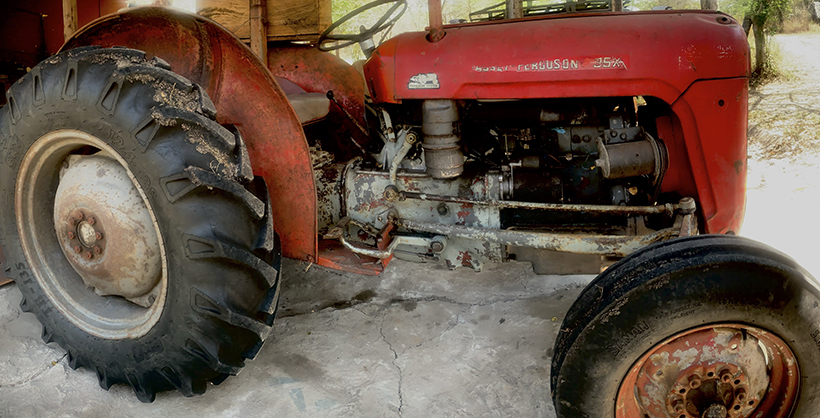
The MF 35 arrived in usable condition but, to smarten it up a bit, the Tanzanians resprayed the tinwork.
What condition was the tractor in when it arrived?
John Selley and his friends had restored the MF 35 to a workable condition before it left the UK, so that it would be usable when it arrived. I know he also got some generous help from a number of specialist suppliers, including Vapormatic (paint and brushes) Witham Oil & Paint (lubricant and greases), RH Claydon (tyres) and Agriline (mechanical parts).
John also provided some spare parts and tools with the tractor, as well as a three-furrow plough, a trailer, a blade, a scissor mower and a PTO crane. The whole consignment was shipped in a 20-foot container from the UK to Dar es Salaam, the main port of Tanzania. Then, once it arrived here, the container was loaded onto a truck and driven to within 40km of our village at which point – unfortunately – it got stuck in the mud!
The only option then was to go and meet the stricken vehicle, unload the tractor, pile all the implements and ancillary equipment into the trailer, and drive the whole lot slowly and carefully to its new home at Kisampa.
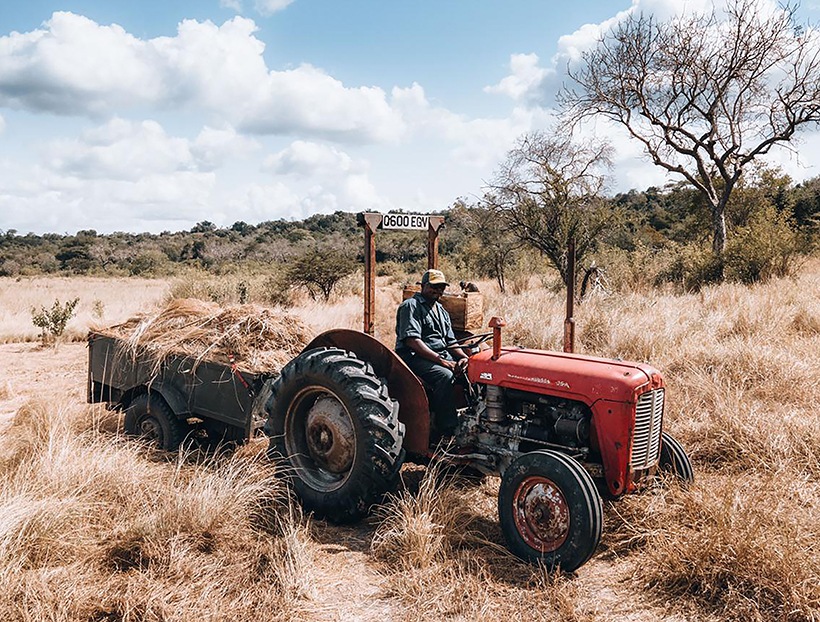
The tractor has revolutionised day-to-day life in Tanzania, and is used for all manner of everyday tasks.
How long did it take to reach Tazmania?
The whole shipping process took about six months, and was longer than expected due to Covid. Nevertheless, I’m delighted to say that the tractor arrived exactly as it had been shipped and, better still, the engine started instantly, once we’d fuelled her up and connected the battery.
Did any of the villagers have any ’old tractor’ experience, in terms of driving and operating?
No, nobody here had any specific experience with tractors of this age, but the internet is a wonderful thing! Thankfully, our local mechanic (Shabani Melela) fell in love with the MF 35 from day one, and so was happy to take her under his protective wing. He has no formal training, but was taught everything he knows by my Dad, before he died, and that’s stood him in good stead.
It’s been pretty reliable so far, although we did have some issues with the hydraulic system that operates the three-point linkage. Fortunately, Shabani was able to trouble-shoot this by taking the pump apart, realising that it needed some new seals and then getting it going again.
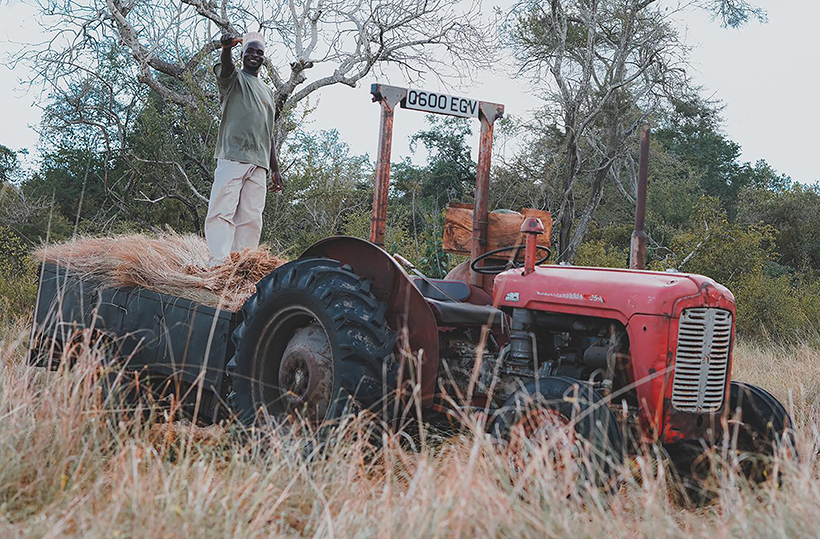
The trailer, that was donated with the tractor and a selection of other useful implements by The Ferguson Club’s John Selley, is indispensable.
What has the tractor been used for so far?
The tractor undertakes all sorts of jobs and is incredibly useful as a result. It handles general tasks around the conservation area as well as on the village farms. We maintain roads with the blade, use the trailer for transporting water and thatching grass, make use of the scissor mower for cutting new roads and the grass airstrip withe the scissor mower and, of course, plough plenty of fields so that they’re ready for cultivation. Apart from the hydraulic pump rebuild and a few punctures, the old Massey Ferguson has been completely dependable, and Shebani takes care of its routine maintenance and servicing needs.
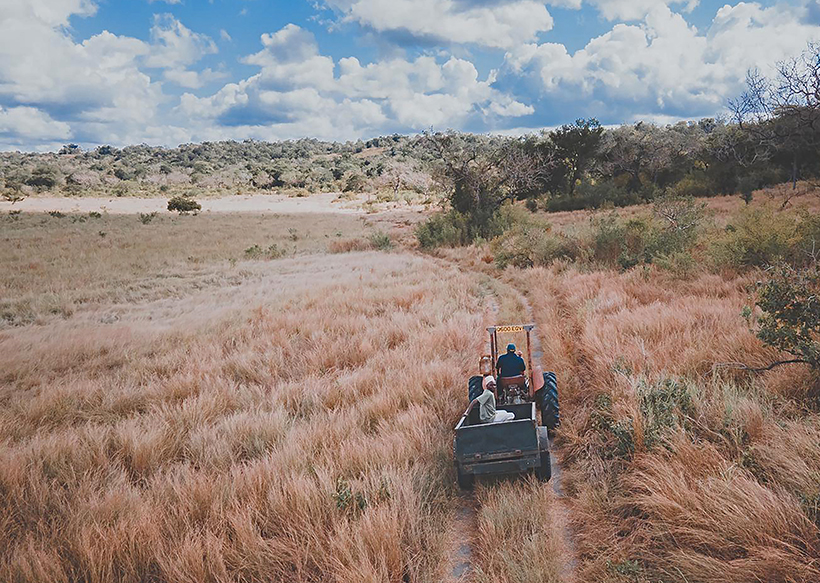
Hitching a ride saves a lot of time and energy out in the wilds of Tanzania.
What’s the spare parts situation like in Tanzania?
We are fortunate that there is a Massey Ferguson tractor dealership just down the road, in Dar es Salaam, and the parts we get from there are supplied from India. This is just as well as it would be both impractical and far too expensive to get spare parts shipped out from the UK.
What difference has having the tractor made?
I think it’s not overstating things to say that the little Massey Ferguson has revolutionised the way we operate here. As I mentioned earlier, before the tractor arrived here, we had to do everything by hand, including big jobs like maintaining the local roads and cutting the airstrip.
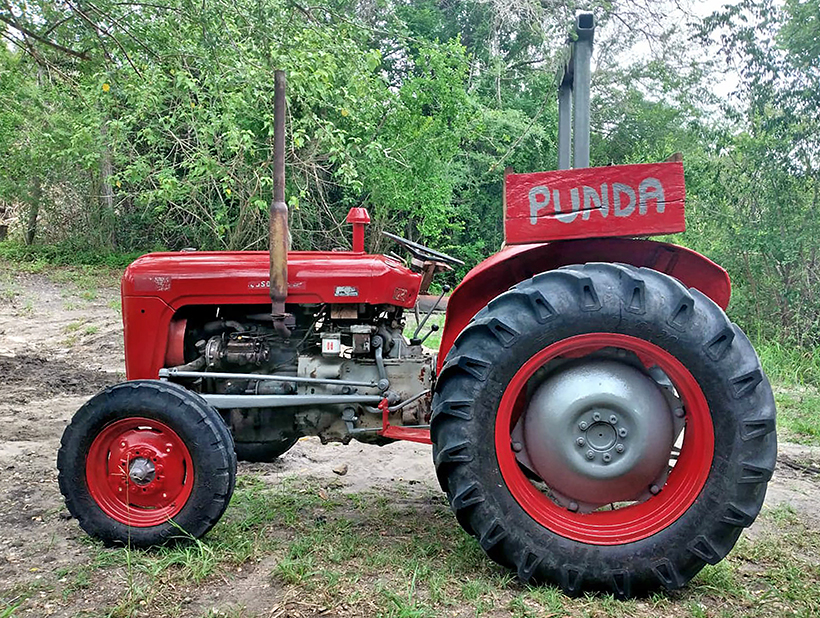
‘Punda’ resplendent in her coat of fresh paint.
With the MF 35 being such an important asset, is theft a worry?
Thankfully, security simply isn’t an issue here. The fact that the tractor is widely regarded as a ‘community asset’ that benefits everyone means that this fact alone ensures it remains secure. In fact, ‘Punda’ (means donkey in Swahili) has become a bit of a celebrity in our community!
What are the plans for the future?
We intend to keep the tractor running for as long as we can and, ultimately, I assume that will be determined by how long we can continue getting any spare parts that may be needed. It’s important that this happens because, as things stand, we have no other alternative. We are currently writing a children’s book about Punda’s second life in Africa, in the hope that the sales of this will raise enough money to buy a replacement tractor, whenever that need finally arises. In the meantime, it’s business as usual and everyone here is so grateful to the kind efforts of those in the UK who made it all possible.
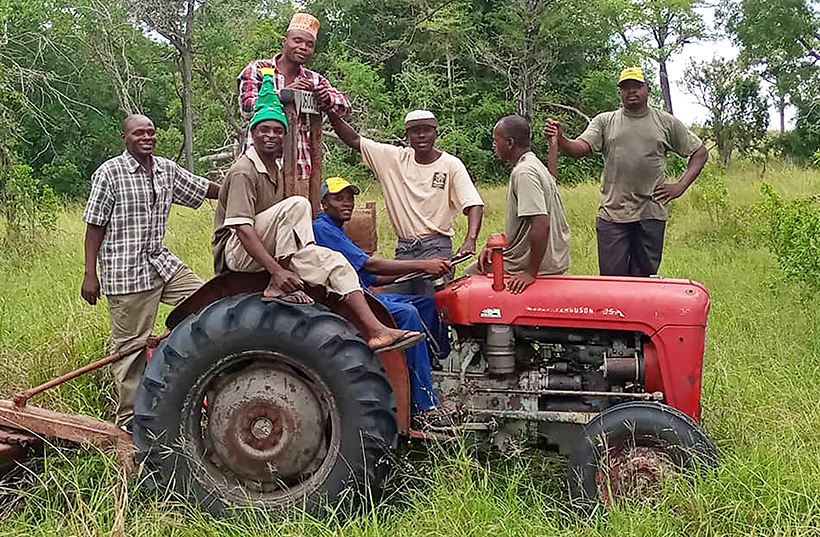
The MF 35 has become a real community vehicle out in Tanzania, and is evidently loved by all.
You can find out more about the important work being done at the Kisampa Conservancy – and make a donation to help further – by visiting the website at: kisampa.com
This article comes from the latest issue of Classic Massey & Ferguson Enthusiast, and you can get a money-saving subscription to this magazine simply by clicking HERE





